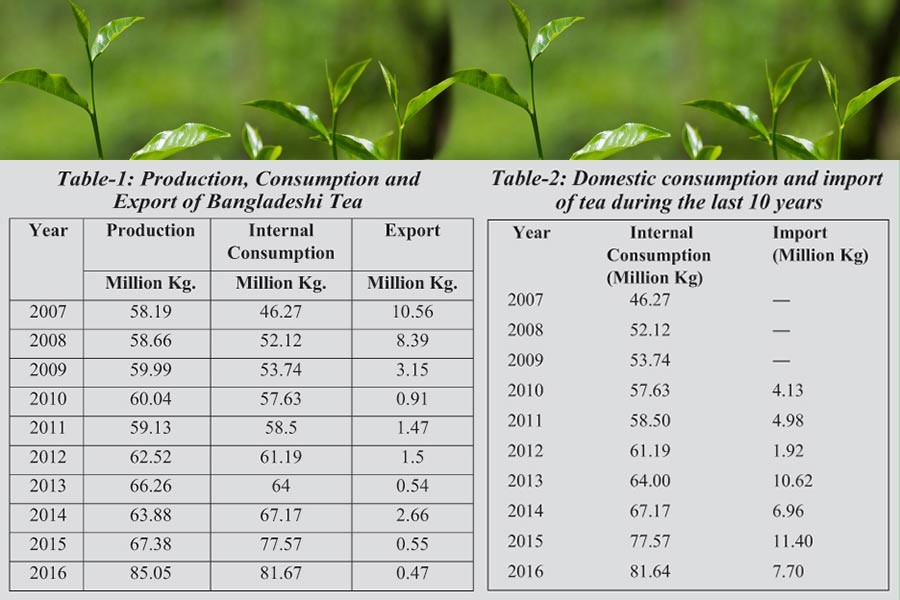Once, Bangladesh was among the top tea exporting nations in the world. In terms of output, Bangladesh ranked ninth behind India, China, Sri Lanka, Indonesia, Turkey, Japan and Vietnam. But at the present juncture, the domestic demand for tea has increased tremendously, while the output remains stagnant. The production, consumption and export of tea from Bangladesh during the last 10 years, as provided by Bangladesh Tea Board, are shown in Table I.
It should be mentioned that the taste and preferences of the people of Bangladesh have undergone changes over time. Many lower and middle class people have graduated to upper middle class. Per capita consumption of tea has reached 500 grams, which was below 100 grams earlier. Most of the tea gardens are old and the tea gardens have now become status symbol for some people. They do not really invest in those gardens with the objective of exporting to the outside world. Some of the tea plants are 60 to 70 years old, and they have not been replaced with new plants. As a result, Bangladesh is now gradually losing its export market and at the same time has to import tea for local consumption. Due to jump in domestic consumption, Bangladesh now exports a very limited volume of tea to only Pakistan, Kazakhstan and Uzbekistan. If the demand keeps rising at 3.0 per cent, the country will need to import 20 million kg of tea annually just to meet domestic demand.
The figures in Table II reveal that domestic consumption is increasing rapidly and the volume of corresponding import is going up. Bangladesh imported tea, coffee, and spices from the People's Republic of China worth US$ 35 million during 2012-2013, and US$ 30 million in 2013-2014. Tea by now has lost its status of being a major cash crop for Bangladesh.
Per capita consumption of tea is going up day by day, and it is high time now to give proper attention to this sector.
The present scenario of tea estates in Bangladesh is shown below:
- Number of Tea Estates: 162
- Total tea plantable area of land: 64,886.25 hectares
- Total tea planted area of land: 59,018.00 hectares
- Area of land for new plantation: 5,868.25 hectares
- Plantable area of land in Panchagarh:758.40 hectares
- Area of land in Panchagarh under small plantation: 796.41 hectares
- Area of land in Bandarban under small scale plantation: 122.27 hectares
In order to address the present situation, attention must be re-redirected to the tea sector by way of increasing investment. We have abundant land resources for tea plantation in the hilly areas of Habiganj, Moulvibazar and Sylhet districts, as well as in the plain lands of northern Panchagarh district and the Chittagong Hill Tracts. Attempts should be made to get foreign collaboration in developing the sector. For example, it should be explored whether Chinese tea planters will be interested in this respect.
Bangladesh offers the most liberal investment climate in South Asia. Investment in Bangladesh is well-protected by law and practice. A new window for foreign investment may open up if the issue of tea is raised in various investment forums.
Pankaj Chandra Das is secretary of Bangladesh Indenting Agents' Association.


